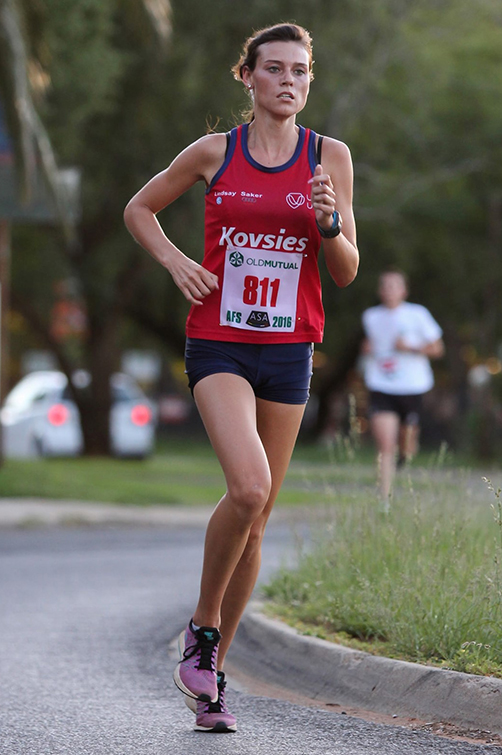After coming within a whisker of claiming the title in 2018, the University of the Free State’s (UFS) runners ensured that the University Sports South Africa (USSA) cross-country trophy comes to Bloemfontein in 2019.
Kovsies are the new national student cross-country champions after they (men and women combined) won the USSA Championships in Nelspruit on Saturday, 21 September. Kovsies and the University of Johannesburg (UJ) both finished with three gold medals at the same event in 2018. UJ finished with nine overall medals compared to the eight (three gold, two silver, and three silver) of the UFS, who had to settle for second place. In 2017, the UFS finished third.
The Kovsie women’s team played a huge role in carrying the team to the top of the medal table, winning four golds. They won the 4 km and 10 km women’s team competitions as well as the road relay. The top three places by the runners of a university determined the team winner.

Marné Mentz’s gold medal in the four-kilometre race at the
USSA Cross Country Championships helped the Kovsies
win the overall title.
Marné Mentz (first), Vicky Oelofse (fifth), and Channah du Plessis (sixth) dominated the four-kilometre race. In the 10 km, Ts’epang Sello (third), Tyler Beling (sixth), and Lizandré Mulder (seventh) did enough to ensure another gold for the Free State students. Mentz, Sello, and Beling jointly took first place in the road relay.
In the 10-km race for men, Kovsies came fifth, with Victor Makhabesela the best performer (finishing ninth). Pakiso Mthembu, one of the contenders for the medal who won the silver medal at the National Cross Country Championships two weeks before, had to withdraw after 7 km in the race due to an injury.